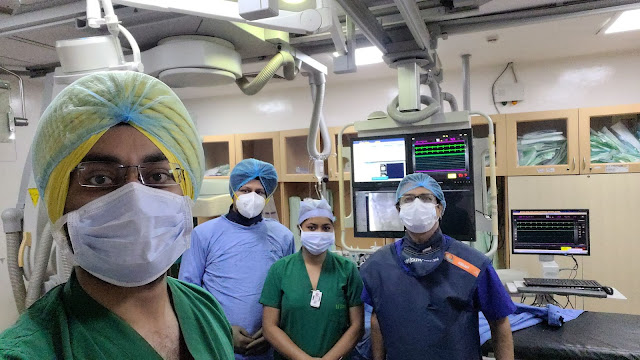Celiac Axis Block For Cancer Related Pain
Pancreatic cancer is the fifth-greatest cause of cancer-related death in the United States, accounting for an estimated 33,370 fatalities in 2007. The annual fatality rate closely resembles the annual incidence rate, reflecting pancreatic cancer's generally short survival time, which is typically less than one year. The most important risk factor for pancreatic cancer is getting older, with the vast majority of cases occurring after the age of 60. Although there is a link with cigarette smoking, the roles of food, alcohol, and coffee have not been demonstrated and should not be considered risk factors. Pancreatic illnesses, such as cancer, can produce severe pain in the upper abdomen that can spread to the back. One of the most crucial components of pancreatic cancer patients' care is pain control, as it is one of the most debilitating symptoms. Adequate therapy combined with ongoing assessment is the best method. Many various pharmacotherapeutic techniques, such as NSAIDs and narcotic analgesics, have been utilised to manage pancreatic pain induced by cancer, but patient responses are often unpredictable and variable. Constipation, dry mouth, nausea, vomiting, and sleepiness are some of the side effects of opioids, whereas NSAIDs can cause gastrointestinal problems and cardiovascular events. As a result, different ways to pain management have been investigated.
Celiac plexus nerves carry messages from the digestive system's organs to the brain and spinal cord, including:-
· Gallbladder
· Intestines
· Liver
· Pancreas
· Stomach
The treatment is usually performed while you are lying prone on your stomach, with a bolster (cushion) under your hips. If lying on your stomach aches too much, try lying on your back (supine position). You will be given an intravenous sedative to help you relax. To guide the procedure, your healthcare professional will employ fluoroscopy X-rays, a CT scan, or an endoscopic ultrasound.
Provider information:-
Using an antiseptic and a local anaesthetic, the treatment area is sterilised and numb.
Inserts a needle into the back and check for proper needle placement by injecting a small amount of contrast dye, which is visible on an imaging scan. You might feel a tiny squeeze and some discomfort.
Removes the needle and inserts a new needle into the treatment location to numb the nerves with a pain reliever (anaesthetic) or steroid.
Alcohol is injected into the celiac plexus using a separate needle (for a neurolytic procedure). The nerves are damaged by the injection, which prevents pain signals from reaching the brain.
Procedure/ Equipment
Despite the fact that fluoroscopy was the first form of image guidance to be employed, CT is the most prevalent modality that has been described to date. The use of ultrasonography has been characterised by some operators as allowing for easy imaging of the celiac vessels, however, this is operator and patient-dependent.
Outcomes
Before the procedure, all patients should be questioned to get a baseline pain score to compare to post-procedural pain. The amounts of pain medication taken can be utilised as objective markers of the procedural outcome, while a visual analogue scale can be employed to assess a patient's subjective pain.




Comments
Post a Comment